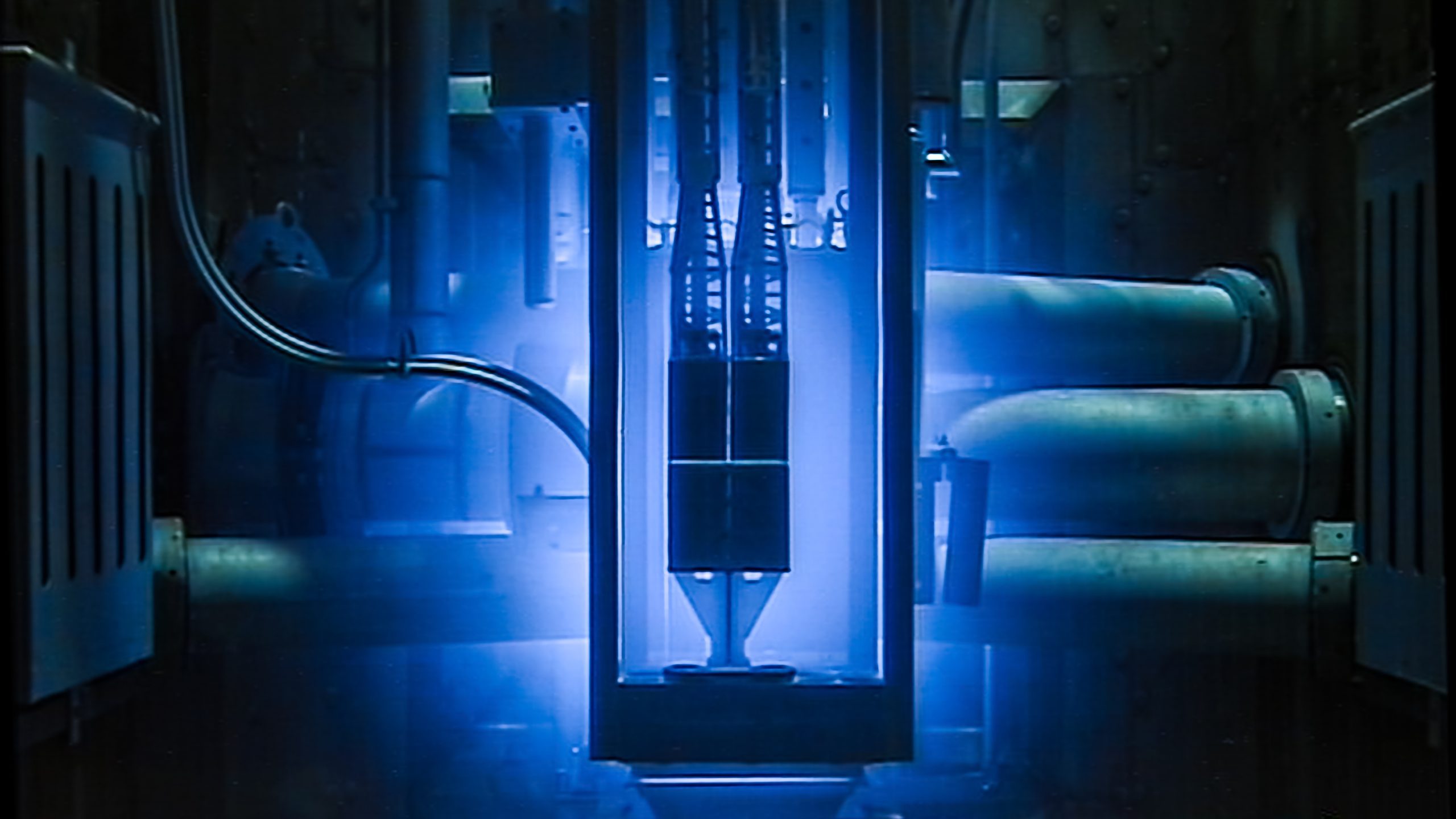On 17 October, the Reactor Institute Delft will celebrate the conclusion of a 10 year, EUR 130 million renovation. Delta went along to take a look. “It is a thorough modernisation for research,” said RID Director Wim Koppers.
The cold neutron source, on the left with two hoses attached, is installed at some centimetres from the active reactor core. (Photo: Reactor Institute Delft)
Dome tents with blue lights stand ready in the car park of the Reactor Institute Delft (RID). Their purpose is to let 170 guests experience the atmosphere of the completely renovated research reactor inside the building on Thursday 17 October. The guest list is made up of special people, all of whom have contributed to the modernisation of the 61 year old nuclear reactor. The final piece, the cold core, was installed last summer and since then neutron measurements have taken on a completely different rhythm. “What used to take a day, we now do in 15 minutes,” says Jeroen Plomp, Head of RID’s Instrument Group.
Cold source
This is why Plomp calls the cold neutron source (CNS) a game changer. The triple-walled steel vessel contains cold helium gas and a vacuum layer, which together comprise about two litres of liquid hydrogen. The hydrogen is cooled to about 250 degrees below zero using helium gas from the new cooling building next to the reactor. The cold core itself is fitted a few centimetres away from the reactor core and is surrounded by the mysterious blue Cherenkov radiation.
Plomp compares the effect of the liquid hydrogen on the neutrons that fly out of the reactor core as a result of nuclear fission to runners encountering a funeral procession. “They adapt and slow down their pace.”
Slow neutrons have huge advantages for research, he explains. They are more controllable than fast ones, allowing three to four times more neutrons to be guided into the beam than before. The intensity of the neutron beam is thus increased.
In addition, slow neutrons interact more with the object they fly through, making the measurements more sensitive. The net effect is that measurements are 30 to 50 times faster than before.
There are also measuring instruments, such as the SANS (Small Angle Neutron Scattering), that only work well with slow and cold neutrons. The SANS is a long tube from the reactor that ends in a kind of yellow submarine. The device has been in the instrument hall next to the reactor hall for 10 years and can now finally be used for research on proteins and polymers for structures between a few and a few hundred nanometres (millionths of a millimetre).
Game changer
Including the SANS, the RID now has six different instruments for neutron research. Their combined range runs from one nanometre to 10 centimetres. Plomp estimates that there are only a handful of similar research facilities in Europe. Waiting times there are often more than a year.
The cold source is therefore a ‘game changer’, says Plomp. “My mailbox is overflowing with requests from all over Europe to do measurements here. I now have to start hiring people to get those measurements done.” These are ‘instrument scientists’: researchers who help domain experts such as dessert makers, battery experts, art historians and meat replacer specialists set up measurements and interpret the measurement data. Indeed, the neuron beam offers unique inside information for a wide variety of materials (solar cells, batteries, prosthetics, polymers, egg proteins), structures and processes that would otherwise remain hidden.

- Want to know more about materials research at the RID?
Do you have a question or comment about this article?
j.w.wassink@tudelft.nl


Comments are closed.